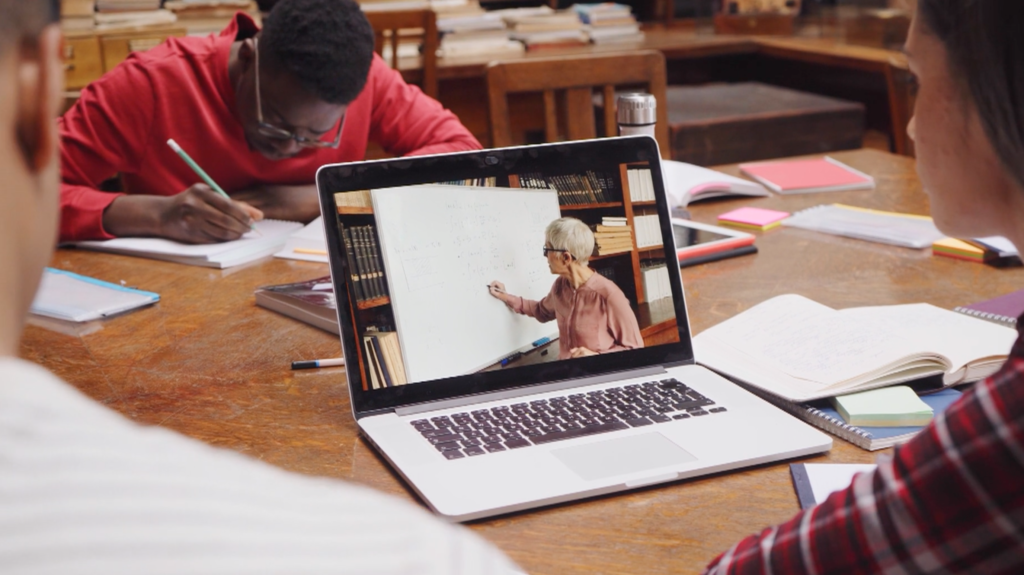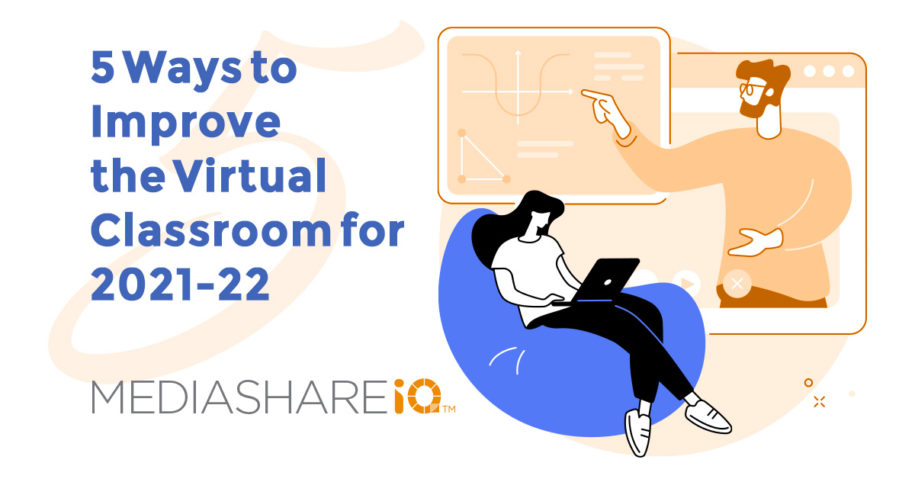While institutions grapple with their opening plans for fall 2021, a recent study finds most students want the option to continue learning online. Meeting this demand will be paramount for colleges and universities to attract and retain students.
However, for the virtual classroom to succeed in a post-COVID-19 world, educators must evolve their teaching methods to engage learners and better leverage technology. While the pandemic forced nearly all faculty members to deliver their courses remotely, many resorted to simply broadcasting their lectures. This approach feels impersonal, isolating, and non-interactive, according to online student reviews.
During our work with hundreds of universities, colleges, and career advancement programs, EMS has seen first-hand how changes to instructional formats and the adoption of digital tools have greatly improved online learning programs. Here are five effective ways to improve your virtual classroom.

1. Make Class Time More Engaging
According to Robert Talbert, educator and author of the book Flipped Learning: A Guide for Higher Education Faculty, during the pandemic students became unenthusiastic of a pure lecture pedagogy as a reasonable use of their time and tuition money. In light of how students learn and their desire for a more engaging experience, “lectures” must be redesigned to be more student-centered and content structured to be more easily absorbed.
In response, many educators are turning to flipped learning—an approach that allows students view lecture videos and other content before class, freeing class time for discussions and interactive activities. For fully remote classrooms and those with a mix of in-person and online attendance, utilizing features like live polls, screen shares, and virtual whiteboards are powerful tools to engage participants and make them feel involved and valued.
2. Ensure Content is Easily Accessible
Instructional content, particularly lecture recordings, needs to be easily accessible to students. Some faculty may be uploading to YouTube. Others may email or message large files directly to students. Others may post to Google Drive or DropBox and add the link to the Learning Management System (LMS). Managing this menagerie is a nightmare for most students.
A better approach for institutions is to adopt a video management platform that automatically captures video of all streamed lectures and makes them immediately available through the LMS alongside other lesson artifacts and study material. Moreover, selecting a platform that connects to your LMS (preferably one that enables single sign-on access) reduces the number of passwords faculty and students need to remember to access course content.
3. Enlist Virtual Guest Speakers
A positive outcome from the pandemic has been the widespread adoption of video conferencing tools, which gives instructors a greater opportunity to invite guests remotely speak to their classes. By providing subject matter expertise and sharing first-hand experiences with students, guest speakers are a compelling way to dive deeper into concepts, spark interesting conversations, and motivate students to actively participate.
4. Test Students’ Knowledge More Efficiently
Waiting until the midterm exam to assess students’ knowledge of course material is an antiquated approach. New teaching methods trim content like videos into smaller modules and incorporate self-assessment questions and quizzes to gauge progress. Best-in-class video management platforms like MEDIASHAREiQ can embed polls, quizzes, and surveys directly into recorded lectures and provide instructors with immediate feedback as to whether or not students understand the material. These platforms also include reporting features that show instructors who has viewed their content and completed the quizzes and sends quiz scores directly to the LMS.
5. Improve Comprehension with Video Captions and Transcripts
As video (both live and pre-recorded content) use has become more mainstream, studies have found that adding video captions offers several benefits to students beyond those who are hearing impaired. These include the ability to improve content comprehension when the speaker is difficult to understand, clarify when names or technical terms are mentioned, and aid students with learning disabilities or attention disorders.
Comprehension and retention of course content can be further enhanced with the use of video transcripts. Regardless of how clear a lecture is, students will misunderstand concepts or take incomplete notes. Making transcripts of lectures available to students provides them with accurate notes and study material. A University of South Florida St. Petersburg study reported that 94% of students found transcripts enhanced their learning experience and that use of transcripts improved student test scores by 8%.
In addition, having transcripts for videos enables them to be searchable. For example, with MEDIASHAREiQ students can perform a keyword or phrase search, see “hits” within the transcript, and jump directly to that reference in the video.
What’s Next for Virtual Instruction?
The pandemic forced colleges, universities, faculty, and students to adopt and adapt to unfamiliar technologies for online learning. But it’s clear that even post-pandemic, virtual learning in some form is here to stay. Success in this next phase will require higher education instututions to assess what has and hasn’t worked, and continually invest in new and better technologies to improve the virtual teaching and learning experience.
Learn More About MEDIASHAREiQ
Ready to bring more interactivity to your virtual classroom? As the leading learner-centric online education software for the virtual classroom and hybrid environments, MEDIASHAREiQ lets you broadcast live classes, record lectures, manage courses and assignments, and archive video assets for asynchronous review—all via full integration to your learning management system.
